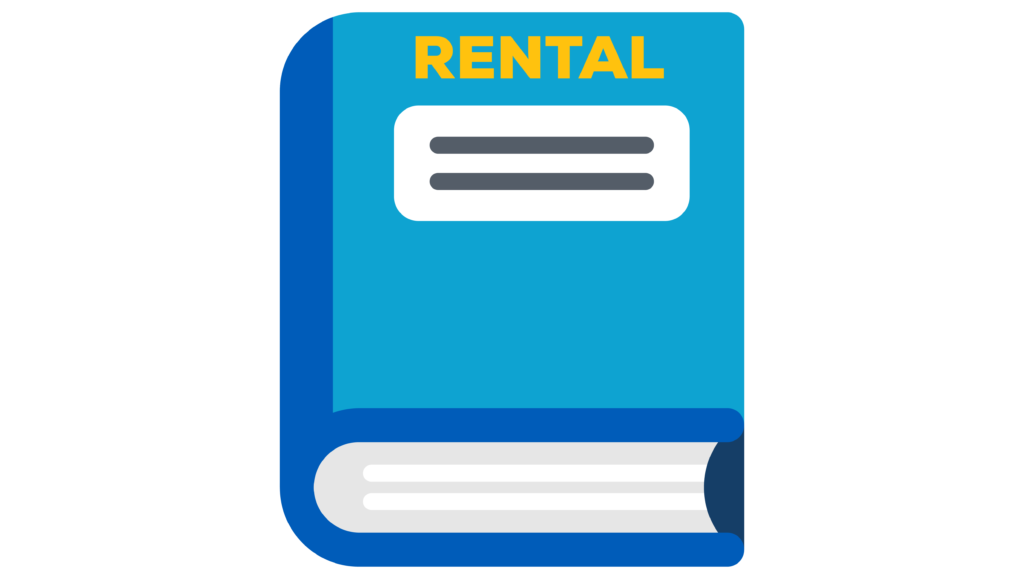By: Kayla Gowan
Let’s face it: college is expensive. Between tuition, housing, student fees, transportation, and textbooks – the costs add up quickly. For many college students, this is the first time you have to budget and manage money on your own.
Managing money and setting budgetary goals may seem like the last things you want to do at the end of a busy day filled with classes and exams, but developing good habits is worth the effort. Managing in-college spending is a learning experience. Fortunately, there are many ways you can save money while in college.
Here are the nine best money-saving tips for college students:

1. Rent Your Textbooks
Buying textbooks can be one of the biggest expenses every semester. One huge way to save money in college is to rent textbooks instead of buying them! With eCampus.com – you can save up to 90% off the regular price of a new textbook. eCampus.com also has three rental term lengths (short term, quarter term, and semester) to fit every student’s schedule and the ability to extend or purchase the rental at the end of the rental term.
If you’ve already purchased your textbooks, when the semester is over – you can sell your books back to eCampus.com for cash!

2. Apply for Grants and Scholarships
Start by filling out the FAFSA before each new school year, regardless of your family’s financial status, to tap into federal, state and institutional grants and scholarships.
You can apply for scholarships and grants every year throughout college! It’s a misconception that scholarships are only for first-year students. In fact, many colleges have systems in place that reward students financially for good grades, volunteering, being an active part of the college town community, and many other things. Given that many scholarships go unclaimed (or have very few entries), if you dedicate some time to applying, you could find yourself saving on tuition costs!
If you’re not sure where to find scholarships, the Federal Student Aid has compiled a list of places to look that you can view here. For more information about how financial aid works, you can read our eCampus blog post here.

3. Create a Budget
If you don’t know where your money is going every month, you’ll never know the true potential of your saving power! Start off small by giving yourself a weekly budget and see how close you come to accurately estimating expenses. Work on creating a realistic budget that you can stick to, incorporating all regular bills or payments. A budget isn’t set in stone and often takes several tries to get right – so keep working on it until you find the right balance!
A lack of structure can keep you from being on top of managing your spending and can mean disaster for your budget. Fortunately, there are a number of free budgeting apps to help.
3 Apps to Help with Budgeting for College Students
- Mint: This money management and financial planning app lets you see all of your accounts in one place. You can swipe to check your balances or get reminders to pay your bills on time!
- Pocketguard: This app lets you see all of your mobile banking, including credit cards, checking and savings, loans, and investments in one place. After you’ve paid the bills, the app tells you how much you have left over, so you can save the rest!
- • Personal Capital: Like Mint and Pocketguard, this app allows you to see all of your accounts on one platform. On this app, you can see separate graphs of your cash flow (income vs. expenses), your budget (what you’re spending your money on), and your investments.

4. Split the Cost of Rent with Roommates
Living with roommates is the quintessential college experience. This is helpful for many students as you can split the cost of rent and utilities with one or more roommates.
Make a point to know what’s already provided in your future dorm or apartment. Some dorm rooms come equipped with a microwave or small fridge or an ironing board in the laundry facilities. An apartment might already come with appliances or even basic furniture. Coordinate with your roommates before shopping so you’re not double-buying items or buying things you don’t need.
Take good care of your apartment so you don’t forfeit your security deposit at the end of the semester!

5. Cook Your Own Food
Eating at restaurants can be one of the most expensive items in your budget. It’s almost always cheaper to cook than it is to go out to eat. While a dinner for $5-10 may sound cheap, it really does add up over time.
How Much do College Students Spend on Food?
The cost of a meal plan has doubled in the last 10 years. The average college and university charges about $4,500, or $18.75 per day, for a three-meal-a-day dining contract that covers the eight months or so of a typical academic year.
You can probably cook the same meal (and prep for future meals) for about half the price. If you do eat out, go for lunch or happy hour when restaurants are most likely to be offering discounts.
That goes for coffee, too! Let’s say you spend $5 on a daily cup of coffee – this can equal up to $375 per semester. Save the bank by investing in a coffee machine and making your morning brew from home!

6. Use Public Transportation
Parking, gas, and insurance for your car can quickly add up. Many college campuses have free buses and shuttles that help students get around campus and even to nearby apartments. Some schools even have rentable bikes or scooters for the semester!
If you need public transportation to get around, see if you can get a student pass. Many colleges partner with their local transit authorities and offer student discounts and student passes for busses, subways, trolleys, and more.

7. Use Student Discounts
Don’t leave home without your student ID! Most places offer a student discount – this can include restaurants, shops, movie theaters, theme parks, and more!
Another big expense for college students is technology. Many students want (or need) to get a new laptop. Plus, some classes require their own specific software that you need to install. Often, technology companies offer significant discounts to students – from Apple and Microsoft, to Adobe and more. If you’re getting any type of new computer or software, make sure to buy it through the education store and get your student discount.
Click here is a list of the top 60 discounts available to students right now! If you’re not sure whether a company offers a student discount, there’s no harm in asking. Better “save” than sorry!

8. Utilize Campus Resources
Check out the amenities that are free for students to use on campus. Campus resources are designed to make college easier, but that’s only the case if you use them!
- Student Gym: working out and staying fit is important in college. Instead of spending money on a gym membership, see if your campus offers the use of the student gym for free. Most campuses have great athletic and gym facilities available to students. Take full advantage!
- On-Campus Printing: printing is another area that can be costly, with papers eating up ink cartridges at home. Oftentimes, the cost of printing is included in your student facility fees. Check the school library to see if they offer free or discounted printing.
- Campus Library: one of the most under-used, but best free tools on a college campus is the library. College libraries have everything, including books, computer stations, software, and more. Libraries also offer free spaces to study, meet with group members, or use the computer.
Other commonly provided resources include tutoring, counseling, childcare, and career services. Check what your college offers before you pay extra for the same service elsewhere.

9. Take Advantage of Campus Activities
Going out every weekend can drain your entertainment budget very quickly. Instead, keep up with what’s happening on campus. Most colleges organize plenty of events throughout the semester, ranging from museum visits, to movie nights, and more for free or discounted rates.
Check the events page on your school website to see what’s up and coming. You can also look for signs and promotions around your campus. These signs often promote free food in an attempt to get students to come. If you do this regularly, you can probably get your lunch taken care of most days! And maybe even learn something!
Bonus: Attending campus events is a great way to make new friends, too!
While saving money as a college student is not always easy, it is possible with plenty of hard work and a commitment to your financial security and wellbeing. Meeting your budgetary goals will not only help your college experience, but prepare you for a bright financial future!
Be sure to connect with us @ecampusdotcom on Twitter, Instagram, & Facebook for more resources, tips, and some great giveaways! And when it’s time for textbooks, eCampus.com has you covered for all your course material needs at savings up to 90%!
References:
- https://turbo.intuit.com/blog/real-money-talk/how-to-save-money-in-college-1539/
- https://www.debt.org/students/college-budgeting-101/
- https://www.affordablecollegesonline.org/college-resource-center/student-guide-to-budgeting/
- https://thecollegeinvestor.com/22453/save-money-in-college/
- https://www.thesimpledollar.com/financial-wellness/63-quick-tips-to-save-money-in-college/


Thanks for the helpful article! Saving money is always a good idea for students, but especially during this strange and uncertain economic time.